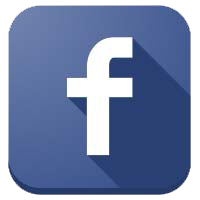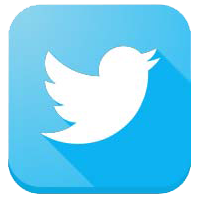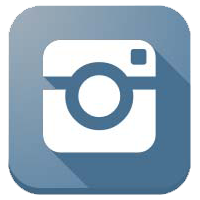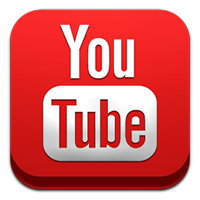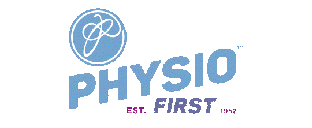Physiotherapy Conditions and Treatments Explained
Conditions Explained
Achilles Tendonitis (Tendinopathy)
The tendon which attaches the calf muscle to the foot is called the Achilles tendon and can be felt as the string-like structure just above your heel bone. When this structure becomes irritated following overuse or underuse (and then sudden overuse) it is called Achilles tendinopathy.
Often a small swelling can be felt in the middle of the tendon. Irritation can occur anywhere along the tendon but typically occurs in the midportion or at the attachment with the heel bone (Calcaneum). It is particularly common amongst runners or people just getting into running either after a long break or having never run before.
Carpal Tunnel Syndrome
The carpal tunnel is located in the wrist on the side of the palm. It is a tunnel in which the tendons pass through from the forearm down into the hand. If the pressure within the tunnel increases then pain is produced either by pressure on the nerves or from the tendons themselves. There are many different causes of carpal tunnel syndrome and the symptoms of tingling, pain or numbness in the hand are typically worse at night.
Frozen Shoulder (Adhesive Capsulitis)
This condition is initially one of the most painful shoulder conditions. The cause of this condition is largely unknown but is more common in diabetic people and may occur following trauma or surgery but may also begin spontaneously for no reason. The physiological process that occurs is that the joint capsule become sticky and adheres itself together.
Normally the joint capsule would have folds to allow movement, but due to the adhesion of these folds the shoulder becomes very stiff and painful. It can restrict the movement of the shoulder significantly. It normally has three phases: the freezing phase (3-6 months), the frozen phase (3-6 months) and the thawing out phase (3-6 months), meaning that the whole process can take up to 18 months to resolve. It is very important that this is identified early so as much range of motion can be maintained in the early stages.
General Aches and Pains
Pain does not have to be associated with sport and exercise and quite commonly people have aches and pains with no obvious cause.
It is our job to establish what the cause may be and then give the appropriate physiotherapy treatment to overcome it. With modern day life shifting towards more desk based work, the stresses on the body have also changed. However our bodies do not like being in any position for a prolonged period of time and often this is enough to cause pain and discomfort.
Headaches
Headaches can be caused by a number of factors, including hormone imbalances, reactions to medication, dietary causes etc, but the cause of importance from a physiotherapy perspective is that of cervicogenic headaches. These are headaches caused by referred pain from a problem with the neck.
This could be purely a muscular referral from muscle spasm/tension in the neck muscles or could be from irritation of the nerves of the upper cervical spine which travel into the head. It is important therefore that the cause is identified and then treated to resolve this type of headache.
Muscle, Ligament and Tendon Injuries
These are the most commonly injured structures in the body. They are regarded as soft tissues and have a good reaction to physiotherapy treatment.
Muscles are designed to contract and expand to produce movement. At each end of the muscle there is a tendon and the job of a tendon is to attach the muscle to the bone. The tendons have significant tensile strength. The ligaments are different in that they attach from one bone to another across a joint and therefore give the joint strength and stability. Any damage to these structures will give pain and affect how the body moves. These are commonly damaged with sporting injury.
Spinal Pain
Spinal pain includes neck pain, mid back pain and low back pain. The spine is a very complicated structure which has many functions in the body. It is designed to allow movement via the many joints it has, supply an area of attachment for the spinal muscles and as protection for the spinal nerves and blood vessels.
Due to many different factors, low back pain is one of the most common problems we see in the physiotherapy department. In fact 80% of the adult population will experience low back pain at some point in their lives. Spinal pain is most commonly caused by poor posture, muscular imbalance and weakness in the core muscles.
Osteoarthritis
This is a degenerative, wear and tear problem with the joints of the body. It can affect one joint on its own or many joints. This is a very different condition to Rheumatoid Arthritis.
Within a normal joint there is space between the bone ends, and cartilage covers the bones where they articulate with each other. A joint with osteoarthritis is where the cartilage and the end of the bone is damaged and the bones have moved closer together. There may also be bony spurs associated with this wear and tear.
It is important to remember that osteoarthritis is a graded condition and can range from very mild to very severe. Often, when people hear that they have a joint affected by osteoarthritis, there perception is that surgery is necessary however this is not the case. In fact physiotherapy is very effective in the management of this condition.
Plantar fasciitis
The sole of the foot has a supportive structure which runs from the heel bone (Calcaneum) to the ball of the foot and is called the plantar fascia. The attachment to the heel bone can occasionally become irritated and present as pain in the heel, typically when putting the foot to the floor in the morning or when weight-bearing after long periods of sitting.
It may be caused by poor foot function, altered biomechanics, hard soled shoes which lack flexibility, lack of use from desk based work and also following trauma to the foot.
Postural Pain
Many of the problems seen in a physiotherapy department have an element of postural association. This means that either poor posture is causing the pain or that pain is causing the person to have poor posture. It is therefore very important to identify the cause of pain and then give the appropriate advice to rectify the pain and then guidance on how to correct the posture.
Changes in posture can happen quickly and are often not noticed until the physiotherapist identifies it as a problem. When poor posture occurs it puts undue stress through the joints and soft tissues which in turn causes pain.
Referred Pain
Quite often, the site where pain is experienced is not necessarily the site of the cause. In this case the cause or location of the origin of pain is not obvious.
It is therefore vital in this situation to locate and identify the site of origin in order to effectively treat the problem. It is for this reason that during a thorough physiotherapy assessment other body parts are investigation to establish any links that may not be obvious from the outset.
Rehabilitation After Surgery
Following any surgical invention there is a period of not being able to use your body as you normally would do. It is therefore very important to have physiotherapy intervention to recovery you strength and range of motion as quickly as possible to prevent any further complications from altered movement patterns.
Examples of the types of operations we would typically see in the physiotherapy department for post-operative rehabilitation include the following: Total knee replacement, uni-compartmental knee replacement, total hip replacement, hip resurfacing, osteotomy, arthroscopy (Keyhole surgery - of any joint), ACL reconstruction (and other ligament reconstruction/repair), rotator cuff repair, lumbar and cervical spine surgery, tendon transfers.
Repetitive Strain Injury
This is any injury resulting from a repetitive action. The most commonly known about is that of hand, wrist and forearm strain from repetitive mouse or keyboard use. RSI can cause pain in the ligaments, tendons, muscles and joints.
Sciatica
This is an umbrella term for irritation of the sciatic nerve. The sciatic nerve runs from the lower section of the lumbar spine, into the buttock and down the back of the leg into the foot.
It is for this reason that people who are experiencing irritation of the sciatic nerve will experience symptoms along any part of its pathway. The sciatic nerve can be irritated from pressure of a disc bulge pressing on the nerve at its origin in the spine, tightness in the piriformis muscle (Piriformis syndrome) which presses on the nerve, or degeneration of the spinal joints which reduces the space for the nerve to pass out from the spine.
Slipped Disc
Also known as disc bulge / disc herniation / disc prolapse
The term slipped disc is very misleading because it implies the disc can actually slip in or out however this is not actually the case. If fact what happens is the disc may bulge or prolapse. A vertebral disc is made of a fibrocartilaginous ring which forms the outer component much like the dough from a doughnut and a softer gel-like centre much like the jam from the doughnut.
A disc bulge is when the outer ring becomes weak and the gel-like centre bulges a little. In more severe circumstances the gel-like centre may prolapse through the outer ring. It is important to remember that there are different grades of disc bulge, mild, moderate and severe. It is also important to understand that having a disc bulge which has been demonstrated on MRI scan does not necessarily mean that this is the cause of the pain.
In fact studies have shown that people who have never had an episode of back pain may in fact have a disc bulge which can be identified on MRI scan. It is for this reason that MRI scans are used along with clinical presentation to build a picture of the likely cause of your problem, but they are not solely relied upon for diagnosis.
Sports Injuries
With the ever increasing popularity of sport and the many different types of exercise offered in today’s market, sports injuries are inevitable.
This is any injury associated with physical activity above and beyond the demands of normal day to day life. Whenever we put our bodies into a more physically demanding situation, the body needs to have the ability to adapt to this demand. It is often the case that for newcomers to sport and exercise the capacity to cope with this just isn’t there and injury results.
It is therefore of vital importance that any newcomer should follow a very progressive approach to beginning sport and exercise including all the correct strength and conditioning exercises and stretches necessary to reduce the risk of injury. Sports injuries can also occur from an external force or trauma such as a heavy impact from a person or object or from an awkward movement.
Sprains and Strains
When ligaments, tendons or muscles are overstressed, damage can occur and this regarded as a sprain or strain. This is when some of the fibres are torn, either microscopically or on a larger scale.
Depending on how many fibres are damaged will depend on what grade of injury it is classed as, and will also then guide the physiotherapy treatment.
Tennis Elbow and Golfers Elbow
This is an irritation of the tendons in the forearm where they attach to the elbow. Tennis elbow is related to the tendons on the outside of the elbow whereas golfers elbow refers to the tendons on the inside of the elbow. Common causes of this are repetitive gripping activities and gripping with impact associated.
Whiplash
This is neck pain and back pain caused by rapid acceleration and deceleration of the neck. This puts large amounts of force through the ligaments, joints, tendons and muscles of the neck which causes overstrain and pain.
It is very important to get the appropriate management following a whiplash injury to rule out serious injury and prevent persistent pain. The type and location of pain experienced will depend on the severity and direction of force during the incident and also the strength, flexibility and condition of the neck prior to injury.
Treatments Explained
Acupuncture
Acupuncture or (dry needling) is the insertion of very fine needles into certain parts of the body to stimulate the release of muscles and hormones (seratonin, cortisol, endorphines) from the brain to reduce pain and stress. This will only be performed after a specific questionnaire insuring there are no reasons why you should not have acupuncture. The particular placement of needles will be tailored to your particular problem.
Advice and Education
This is always given to ensure you have a full understanding of the problem and what you can do to help yourself. Part of rehabilitation from any injury is about what you do for yourself in between physiotherapy sessions. It is often very alarming when you have pain and to have a clear understanding about the cause of the problem will help you to understand why you have been asked to do the particular exercises or lifestyle adjustments in between sessions.
Corrective Taping
There are two main types of tape used at the clinic. One is kinesiotape and the other is Leukotape. Kinesiotape (K-Tape) is a flexible tape, often seen on sports events on TV in bright colours, which is placed on the skin over the top of muscles either to activate them or quieten their activity. It is a very comfortable tape to wear during sporting activities as it corrects the muscular problem without restricting movement. Leukotape on the other hand is a more structural tape meaning that it gives support to muscles and particularly joints. It is not a flexible tape and is used for changing how joints move and correcting posture. It can also be used to support joints during sporting activities to prevent sprains and strains.
Gait Re-education
Often, following injury, the body moves in a different way to compensate and avoid pain. Particularly with lower limb injuries, your normal walking pattern (or gait pattern) may change and in order to make a full recovery this needs to be assessed and then corrected where necessary to allow more fluid and efficient movement patterns.
Instrument Assisted Soft Tissue Massage
This is the use of metal tool to gently massage the skin, muscle and fascia. It is often describes as a rubbing feeling on the surface of the skin but has very effective results with only short treatment times. It is of particular benefit around joints where there is less muscle mass. It is used to release tension in the soft tissues including muscles, ligaments, tendons and fascia (connective tissue).
Joint Manipulation
This is often known as the clicking or cracking of joints. This process is called cavitation and will also increase the mobility of a joint and therefore reduce pain and stiffness.
Joint Mobilisation
A well-known condition called osteoarthritis causes joints to become painful and stiff. This process can be eased with gentle repeated joint movements performed by a physiotherapist. These may be in the normal direction of movement (physiological movements) or more subtle movements which occur as a result of normal movement, called accessory movements. Both types of mobilisations will wash the normal synovial fluid around the joint which has the added bonus of helping lubricate the joint and supply it with extra nutrition. This has the very effective result of increasing range of motion in a stiff joint and reducing pain in a painful joint. These can be applied to any joint in the body.
Myofascial Release
These techniques are similar to massage techniques but are more subtle and sustained pressures applied to the soft tissues. They are particularly effective when an area is very painful or pain has been present for a long time (chronic or persistent pain).
Posture Correction Exercise Regimes
Following the Physiotherapy assessment, if your problem is found to have a postural component to it then corrective exercises will be issued to strengthen weak muscles and stretch the tight muscles. Education and advice will be given about how to achieve the correct posture with demonstration and practice.
Scar Massage
Following surgery or trauma to the skin and muscle, scar tissue is formed as part of the normal healing process. As mentioned above, this tissue is generally thicker and less flexible which has the potential to cause pain and restricted movement. Scar massage therefore aims to minimise this by gently mobilising the tissue while in the middle to later stages of healing i.e. 2-8 weeks after injury.
Sports Massage
This is a style of massage used where the appropriate amount of pressure is used to achieve relief of pain from tight muscles and muscle spasm. People often believe this to be a painful technique but this is not always the case and can be tailored to your level of tolerance. It is important to understand that you are in control of your treatment and may ask to have less or more pressure at any time.
Stretches
When muscles are used regularly for sports or other activities on a repetitive basis, the tension or tone in those muscles will increase meaning that they become tighter. If appropriate stretches are not completed as well then this muscular tightness increases to a point where it will become painful. These muscles need to be stretched, and advice and education will be given for you to stretch appropriately for the activities or exercises you are doing. These will be practised in clinic, so you can understand how they should feel so you continue with them on a long term basis yourself.
Ultrasound
When we have an injury caused by trauma (both surgical trauma and accidental trauma) or repetitive strain the body produces scar tissue. This is a substance that is generally less flexible and thicker than normal tissue and as such can cause pain. Ultrasound is an electrotherapy technique that uses very high frequency sound waves, which cannot be heard or felt, to make this tissue more supple and mobile, and also break down the fibres so they are less thick. It also promotes tissue healing in the earlier stages or injury by increasing the blood supply to the area.






